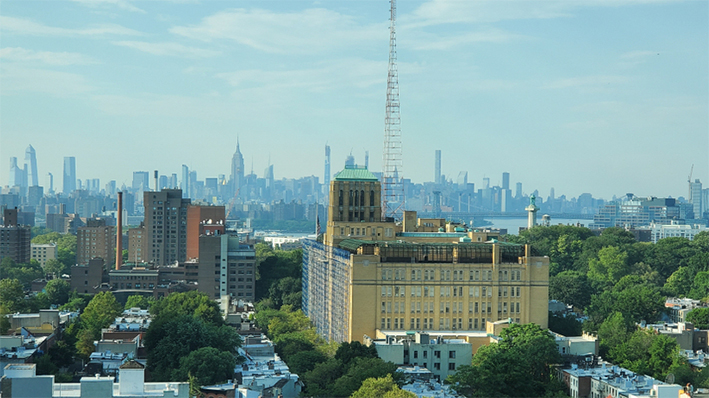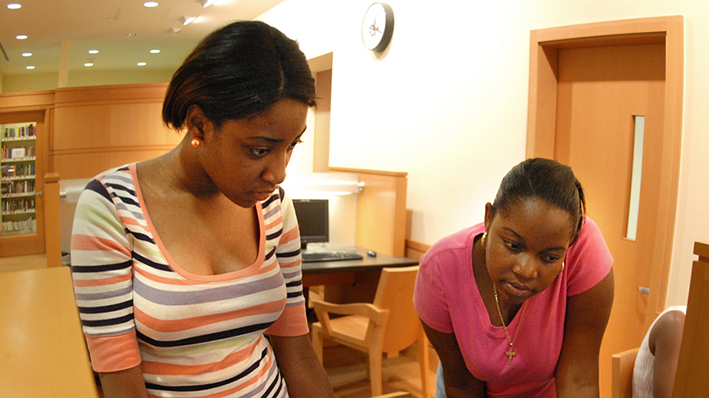
“We need a conversation about what’s happening now,” Democratic Senator Michael Bennet voiced in the second round of Presidential Debates over the summer, propelling conversations on “busing” and desegregation – that had been relegated to the past by Vice President Joe Biden and Senator Kamala Harris – to the present.
On a stage set in Detroit, Bennet referred to Detroit public schools as indication that American public schools are as deeply entrenched and mangled in the grips of segregation today as they were fifty years ago.
MOST SEGREGATED IN NATION
This argument comes in the time where New York City’s public schools are continuously being regarded as one of the country’s most segregated education systems. A black female graduate of Brooklyn Technical High School, one of the city’s “elite” public high schools, I found myself – like millions of other black and brown students within the city’s public education system – embedded in the city’s dark and complex history of segregation, failed by the false narratives of the specialized high school entrance exam (SHSAT) and the city’s “school-choice system”, one hailed as progressive education policy, but in actuality built on racism and classism.
I found myself navigating the halls of Brooklyn Tech in 2015, after graduating from a predominantly black, underfunded middle school comprised solely of students like myself – of low income, Caribbean immigrant backgrounds. Unlike schools in the wealthier parts of the city, my middle school did not benefit from well-funded test preparation programs for the SHSAT; rather, we were making sure that we passed our New York State exams. I had heard about the exam and the existence of specialized high schools in passing – truly by chance, by mistake, as opposed to years of calculated test preparation and research done by other families in the city.
LACK OF PREPARATION
It didn’t take long before recognizing the universality within the stories of black students at Brooklyn Tech – while our stories widely varied, they remained true to the fact that many of us had not heard of, nor extensively prepared for, the SHSAT.
As one of my classes my junior year attempted to dissect the controversy of the SHSAT, a student expressed their confusion with the discussion, stating they believed the cut-off score was significantly lower for black students. I sat as one of eight black girls in a major cohort of nearly 200 students, listening to the student’s presumption that the cutoff score was higher for Asian students and lower for black students, accompanied by the fact that this was the belief among them and their circle of friends.
Incidents like this one, which are commonplace and weaved into the fabric of both social life at specialized high schools and discourse on keeping the exam, illustrate the shortcomings of the SHSAT, more specifically its role in exacerbating segregated schooling, institutional racism and classism, and perpetuating anti-blackness under the guise of a meritocracy.
STRUCTURAL FACTORS
Specialized high schools are emblematic of the city’s serious need for integration, as the rate of black and brown students present in these “elite” spaces declines dramatically each year. Despite black and brown students making up the majority of the city’s education system, they are severely underrepresented at some of the city’s most selective specialized high schools, where the number of black and brown students struggles to make up even ten percent of the student population. For Brooklyn Tech, black students make up only 6% of a total student population of nearly 6,000.
The exam fails to take into account structural factors – ranging from poverty and homelessness to police brutality and educational disparity – that impacts which students are able to learn about and adequately prepare for it. In a city where “over 2.5 million men, women and children lack the income needed to cover basic necessities like food, housing, transportation, and childcare,” the exam furthers stratification based on race and class – especially as for many New Yorkers, specialized schools are perceived tickets of social and economic mobility, and garner access to some of the most prestigious institutions of higher education in the country.
FAILED INITIATIVES
In June, Mayor De Blasio’s plan to reform the specialized high school admissions process failed in the Senate, with Legislature opting to take no further action on the future of the SHSAT. Before de Blasio’s two-part attempt at reform, he had been taking incremental steps- such as expanding test prep programs citywide, and boosting outreach – that failed in resolving the diversity issue at these specialized schools. These failed initiatives should serve as foreshadowing of the failure of short-term, band-aid solutions, like the city Department of Education’s new plan to expand the test, being proposed in lieu of eliminating the exam.
While these kinds of proposals to expand and increase accessibility to the test may provide temporary fixes to the lack of diversity at these “elite” schools, it still avoids addressing the bigger picture – the city’s deeply segregated education system, and its failing high schools.
MEANINGFUL FUNDING

futurewalk/shutterstock.com
Instead of investing in SHSAT reform, the city’s leaders should be working towards providing equal funding for all New York City public high schools, ensuring that teachers are paid more, and that every student in the city receives the quality education, resources, opportunities, and benefits of a specialized high school; the city’s efforts should be pointed at fixing the deplorable conditions of schools across the city, accommodating low-income, predominantly black and brown neighborhoods, and funneling more energy into the city’s schools that have been left behind or fallen through the cracks.
When asked for her opinion on the exam controversy, Congresswoman Alexandria Ocasio-Cortez responded, “My question is, why isn’t every public school in New York City a Brooklyn Tech-caliber school?”
TIME IS NOW
New Yorkers should be asking ourselves what purpose distinctions between specialized and non-specialized schools serve, as what seems to be missing from the SHSAT discourse is that regardless of reform, countless of black and brown, low-income students will continue to be failed and left behind by the city’s education system if there are no conscious efforts being made to combat segregated schooling.
About the Article
A look at segregation in New York City’s specialized high schools.



